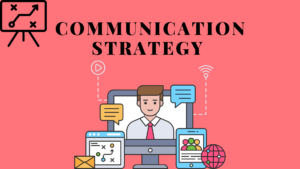
Our daily lives depend heavily on communication, which is possibly the most important life skill of all. The exchange of information between a sender and a receiver is referred to as communication.
Additionally, a strategy and aim should be in alignment with effective communication in the workplace. They act as a guide for speaking with coworkers, clients, and superiors. A company’s communication plan has an impact by connecting its fundamental values and business objectives, which improves employee engagement and increases employees’ motivation to perform their jobs more effectively. But, for that one needs a strategic communication plan template, isn’t it?
What is Communication Plan?
A communication strategy is a marketing and commercial technique that enables firms to coordinate their messaging and create messages that are coherent and relevant. These plans could concentrate on internal or external communication, or they might outline the communication plan for a specific project.
The strategy usually describes the objective, the steps to complete the tasks, and the expected business results while outlining the plan for communicating with a target audience. Your organization’s marketing and commercial strategy may be built on communication tactics.
Why is a strategic communication plan required?
1. It provides a marketing strategy. You might use this as a road-map for marketing communications if your business decides to create a comprehensive communication plan. As an illustration, you may use the communication strategy to decide the aims and objectives of a dialogue with a new client. The plan can also include the precise target market, essential messaging, and other critical information that helps a marketing campaign succeed.
2. It will bring clarity to the workplace. An business may benefit from having a communication plan if it wants to be more clear about how to interact with customers or with one another. No matter what kind of communication strategy is used, it is a tool that describes numerous communication-related topics and relevant information that are important to the target audience and the company’s personnel. Employees that have a better comprehension of the primary messages and communication objectives may communicate with clients and consumers in a more successful manner as a result of increased clarity.
3. Consistency across the organization is a further advantage of communication tactics. Both internal and external communications need to be consistent. It could bolster customers’ confidence in your company. Employees benefit from consistent internal communication because it improves comprehension and reduces the likelihood of misunderstandings.
What should an Effective Communication Strategy consist of?
1. Think about your organization’s long-term and short-term objectives. It is crucial to be clear on these objectives since everything you do should support them. Specify the communications goals of your company to internal stakeholders, such as greater media exposure, damage control, branding, etc. For instance, your company’s long-term objective may be expansion, but its short-term objective might be boosting local brand awareness.
2. Establish goals that support the aims of your business. Clarify your goals as much as you can. Explain the significance of each goal. Your objectives should be clear enough that once they are completed, it will be simple to determine if they were successful or unsuccessful. Additionally, they must to be adaptable enough to be changed in the event of potential modifications.
3. Determine who will receive your communications. Identify the groups and people you are attempting to influence, such as the general public, a media outlet, active participants, or others. Don’t forget to take into account all of your organization’s stakeholders. Mention who they are. Whom among the aforementioned should we contact right away? Sort the items in your list. For instance, even though it normally makes sense to increase media exposure, there are instances when speaking with essential stakeholders is far more crucial. For instance, you can decide that residents in a few specific areas, whose brand recognition for your business is very low, make up your most crucial audience.
4. Specify how you’ll get the word out. Include information regarding mailings, social media platforms, media outlets, and other distribution methods and formats for your communications. Include a list of any media connections, PR agreements, social media services, etc. Determine particular strategies for diverting attention if your aim is to decrease media attention or examination of your company.
How to create an effective communication plan?
Every communication plam must be made keeping in mind certain important elements Here’s a list of all elemts one must focus on before they write a communication plan.
1. AUDIENCE: Knowing and comprehending your listener is the first step in drawing up an effective communication plan. Which key stakeholders are you writing for in this scenario if a crisis communication strategy is for stakeholders? Examples of stakeholders include staff members, investors, clients, citizens, and members of the local government or media. Creating a communication channel is important for your audience.
2. OUTLINE: It’s probably best if you start with a table or chart to identify the key messages you need to promote, what you want to achieve, to whom you’re targeting those messages, and on which channel when you’re ready to outline and create your strategy (s). Following the creation of a basic overview, your communications strategy should be organized as follows (you are welcome to copy and paste these parts into a Table of Contents for your own plan):
- Purpose (what is this communications plan for)
- Do’s and Don’ts for each employee’s roles and responsibilities
- Hire a team and train them with all the details required.
You can also do a SWOT analysis [Strengths, Weaknesses, Opportunity and Threats]
3. DELIVERY: Depending on your message and the audience you wish to reach, you may use several communication methods. If you’re developing a communication strategy for internal staff, for instance, you may send your strategy out via an email to the whole firm or utilize in-person team meetings to communicate your message. In contrast, you can decide that it’s preferable to interact with customers through a press release or an email newsletter.
4. SCHEDULE: You should have a rough idea of how long each stage in putting your plan into action will take. Consider how long it will take for your strategy to move down the chain of command, for example, if it needs to travel from the top down to the team members. It’s also wise to speculate on the length of a media cycle.
5. RESULTS: There’s constantly space for development. After presenting the strategy to the stakeholders, evaluate the results and identify both the things that went well and what needs to be improved communication.
Free Communication Plan Template
We have created a sample communication plan to help you and your team started. Click here to access it!
A strong communication strategy will successfully convey your message to your target audience while ensuring that you are on pace to meet your company’s goals. Write an effective communication plan with the free template provided.
To establish a successful communication plan, adhere to the straightforward procedures listed above. Please share any further advice you may have with us in the comment section.
We hope you found this article helpful. All the best!

